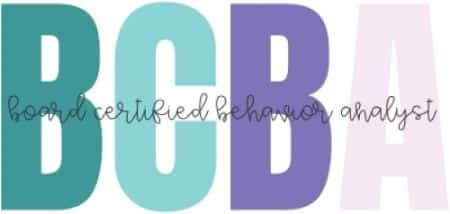Introduction
In the field of Applied Behavior Analysis (ABA), understanding the distinctions between BCBA vs RBT is crucial for anyone pursuing a career in this domain or seeking therapy services for individuals with developmental disorders, such as Autism Spectrum Disorder (ASD). Although both roles are essential to effective therapy delivery, their responsibilities, qualifications, and scope of practice within the ABA framework differ significantly.
What is a BCBA?
Role and Responsibilities
A BCBA, or Board-Certified Behavior Analyst, is a highly trained professional with a graduate-level certification in behavior analysis. Their primary responsibilities include developing, implementing, and overseeing Behavior Intervention Plans (BIPs). BCBAs conduct comprehensive assessments, create individualized treatment plans, and utilize data analysis to monitor client progress. The role of a BCBA is to facilitate meaningful and sustainable behavioral changes in their clients.
Success Stories
“Move Up ABA has been a lifeline for our family. Before starting therapy, our son struggled with daily routines and communication. Now, he’s more independent and even initiated a conversation with a classmate for the first time! The progress we’ve seen in just six months is truly remarkable.”
- Emily R., Silver Spring, Accountant
“As a single dad, I was overwhelmed trying to manage my child’s behavior. The Move Up ABA team not only provided amazing support for my little girl but also taught me practical strategies to use at home. Their in-home sessions fit perfectly with our busy schedule. I’m so grateful for their patience and expertise.”
- Michael T., Rockville, Middle School Teacher
“We were hesitant about starting ABA therapy, but Move Up ABA’s approach put us at ease from day one. Our twins have made incredible strides in their social skills and self-regulation. The therapists are like extended family now, and we couldn’t be happier with our decision to work with them.”
- Aisha and James L., Simpson, Police Officers
Ready to start your child's journey to success? Schedule a free consultation today! 📞 Call (410) 497-8865.
Key Responsibilities of a BCBA:

Behavior Assessments: Conducting Functional Behavior Assessments (FBAs) to determine the root causes of problematic behaviors.
Program Design: Developing detailed treatment plans tailored to each client’s unique needs.
Supervision: Overseeing the work of RBTs and other ABA professionals, ensuring that therapeutic interventions are administered effectively and ethically.
Data Analysis: Analyzing data collected by RBTs to make informed decisions regarding treatment adjustments and progress monitoring.
Family Training: Providing training and support to families and caregivers to help them implement ABA strategies outside therapy sessions.
Qualifications and Certification

To become a BCBA, one must complete a master’s degree in behavior analysis or a related field, fulfill supervised experience hours, and pass the BCBA certification exam administered by the Behavior Analyst Certification Board (BACB).
What is an RBT?
Role and Responsibilities
An RBT, or Registered Behavior Technician, is a paraprofessional certified to deliver direct ABA therapy to clients under the supervision of a BCBA or BCaBA (Board Certified Assistant Behavior Analyst). RBTs are integral to the day-to-day implementation of ABA therapy, working directly with clients to execute treatment plans and collect data on their behaviors.
Key Responsibilities of an RBT:
Implementing Treatment Plans: Delivering one-on-one therapy sessions using various ABA techniques such as Discrete Trial Training (DTT) and Natural Environment Teaching (NET).
Data Collection: Accurately recording and reporting client behavior and therapy outcomes, which supports data-driven decision-making.
Behavior Management: Utilizing ABA strategies to manage challenging behaviors and promote the development of positive behaviors.
Skill Acquisition: Assisting clients in acquiring new skills, including communication, social interaction, and daily living skills.
Collaboration: Regularly communicate with the supervising BCBA to discuss client progress and address any session challenges.
Qualifications and Certification
To become an RBT, individuals must complete a 40-hour training course, pass a competency assessment, and successfully complete the RBT exam administered by the BACB. The role requires a high school diploma or equivalent, making it more accessible than the BCBA role.
BCBA vs. RBT: Key Differences
Understanding the key distinctions between BCBA vs. RBT roles is essential for anyone exploring career paths in ABA therapy. These differences include the scope of practice, supervision requirements, and educational prerequisites.
Scope of Practice
BCBA: BCBAs have a comprehensive scope of practice that includes conducting assessments, developing treatment plans, and supervising other practitioners. They have the autonomy to make clinical decisions independently.
RBT: RBTs have a more focused scope of practice centered on direct therapy delivery. They do not conduct assessments or create treatment plans but follow the directives set forth by the supervising BCBA.
Supervision
BCBA: BCBAs provide oversight and support to RBTs and other ABA professionals, ensuring that therapy is implemented correctly and in adherence to ethical guidelines.
RBT: RBTs work under the direct supervision of BCBAs or BCaBAs, participating in regular supervision sessions to maintain high standards of practice.

Education and Certification
BCBA: Requires a master’s degree, completion of supervised experience hours, and passing the BCBA exam.
RBT: Requires completing a 40-hour training program, a competency assessment, and passing the RBT exam.
Career Pathways and Opportunities
For BCBAs
BCBAs have numerous opportunities for career advancement within the field of behavior analysis. They can move into senior clinical roles such as Clinical Director or ABA Program Director. Additionally, BCBAs may specialize in school consultation, organizational behavior management (OBM), or research, offering substantial professional growth and leadership opportunities.
For RBTs
RBTs often use their role as a stepping stone for further career development in the ABA field. Many pursue additional education and certification to become BCaBAs or BCBAs. The experience gained as an RBT provides a strong foundation in the principles and practices of ABA therapy, making it an excellent entry point into the field.
Choosing the Right Role for You
Deciding between a career as a BCBA or an RBT depends on your educational background, career goals, and desired level of responsibility. If you are passionate about developing and overseeing treatment plans and making clinical decisions, a BCBA role may be ideal. If you prefer direct client interaction and wish to quickly start your career in ABA, the RBT role is an excellent choice.
ABA vs. RBT: Understanding the Framework
When considering ABA vs. RBT, it’s essential to recognize that ABA represents the broader field of behavior analysis, encompassing various roles, including BCBA, BCaBA, and RBT. The RBT role refers explicitly to the entry-level position within this field, focused on delivering direct therapy under supervision.
Conclusion
Both BCBAs and RBTs are integral to the success of ABA therapy, each contributing uniquely to the therapeutic process. Understanding the differences between BCBA vs. RBT roles is crucial for choosing the right career path in the rewarding field of behavior analysis. Whether your goal is to lead therapeutic interventions as a BCBA or to work directly with clients as an RBT, each role offers a fulfilling career dedicated to improving the lives of individuals with developmental disorders.






